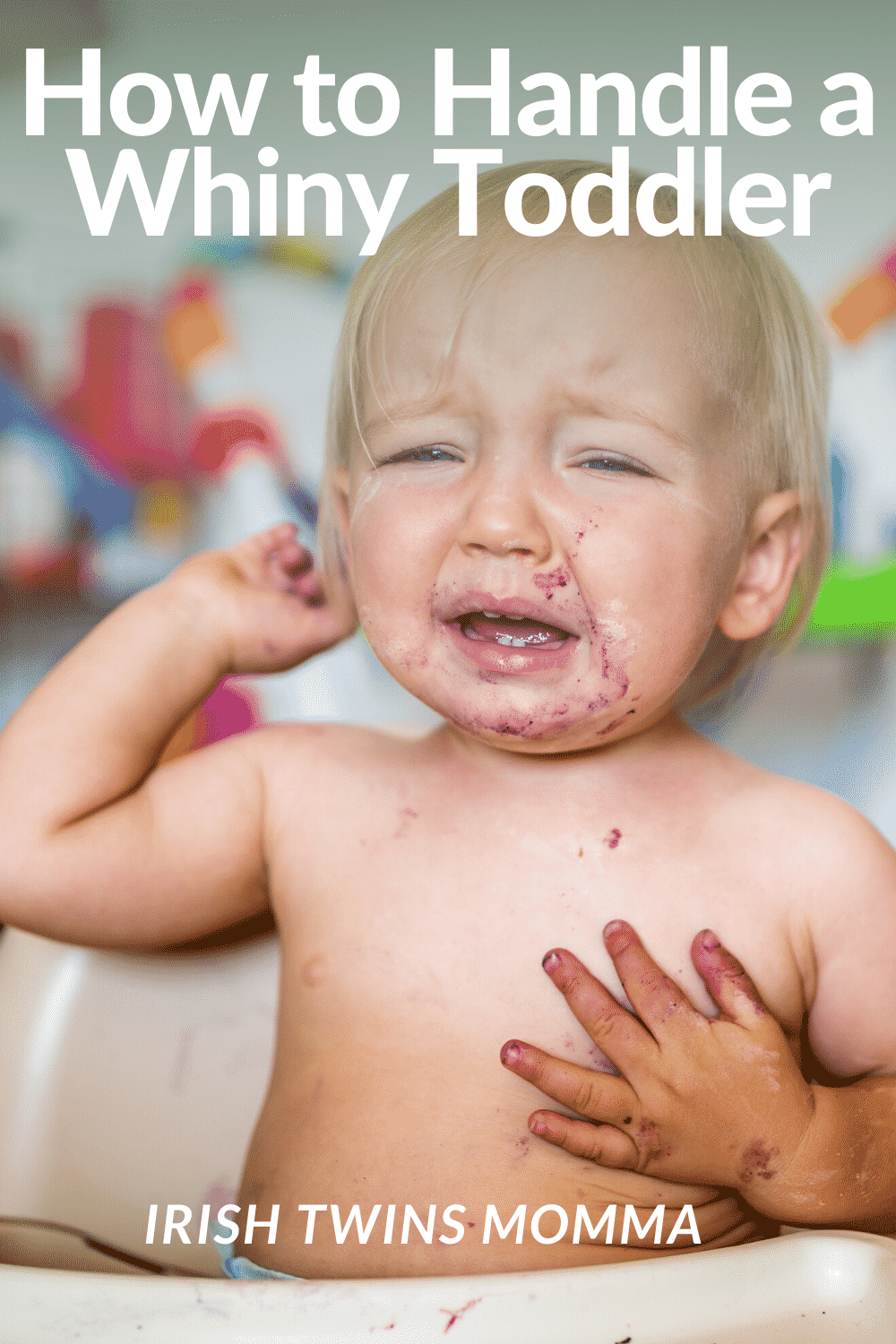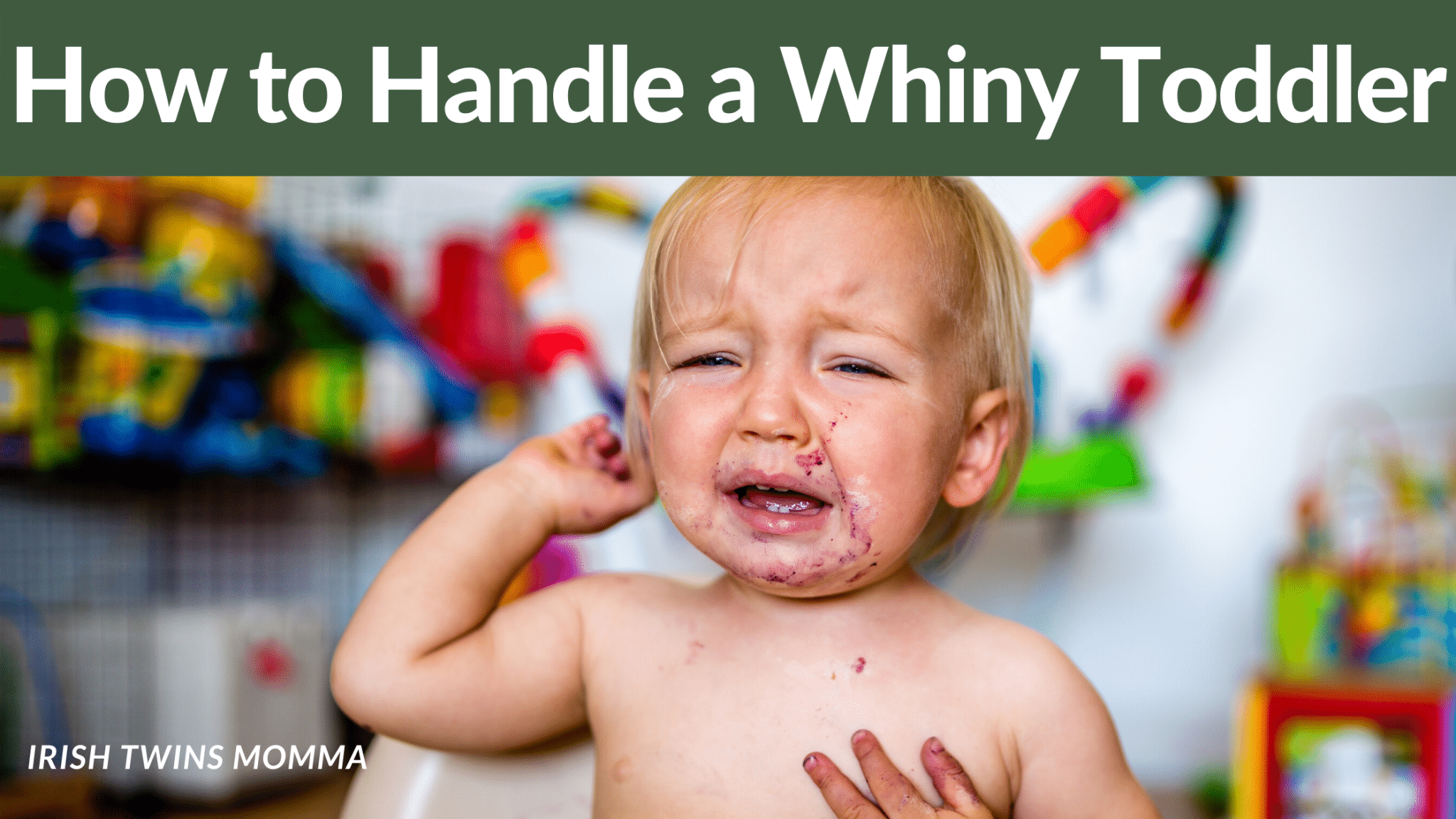This post contains affiliate links. If you click and buy, I may make a commission, at no cost to you. See my disclosure policy for more information.
It is just me, or is the word “toddler” synonymous to “whining?”
Of course, toddler-hood is a magical time of growth and the cutest snuggles and all-around hilarity, but when the littlest thing can make your toddler whine while you’re dealing with real stressors in life (i.e., getting food on the table, maintaining a safe and clean house, keeping your toddler alive, etc. etc.), it can be frustrating to navigate your toddler’s seemingly unreasonable emotions — such as feeling hungry (even though they ate breakfast only 5 minutes prior), wanting a particular toy (despite there being a nearly identical one within their reach), or whining over a booboo that they got, not hours, but days ago.
No matter the reason for their whining, the sound alone is enough for you to raise your white flag and let them get their way. Toddlers, the cunning creatures that they are, will remember this response and realize all they have to do is whine and mom will give in — and of course, that’s the last thing we want!
As insignificant as the reason for their whining may seem, there’s usually a deeper, root issue that is causing this behavior. Of course, they are whining because they want something, but what is making them respond to their emotions through whining? Let’s break it down.
Your toddler may whine because:
- They are tired, cranky, or “hangry” due to the lack of routine or departure from their typical schedule
- They are feeling an emotion, like stress, and can not effectively express it
- They want something and cannot communicate it
- They are craving positive connection
- They have a genuine need, like a tummy ache, and need your help
And last, but certainly not least…
- Simply put, they know whining will get them what they want, and quickly
- Sheer boredom (insert *shrug* emoji)
So now that you know why your toddler whines, what can you do about it? Yes, incessant whining sounds like nails on a chalkboard (especially when you’re a mom of Irish twins that are both whining at the same time!), and it very well may make you want to pull your hair out. In all seriousness, though, we want to help our toddlers work through their feelings, communicate more effectively, and, ultimately, prevent or stop whining in response to any of the reasons listed above. Apart from the obvious — not giving in — what other measures can be taken?
Develop a Routine (and Stick With it)
When your toddler’s internal resources are depleted, they are more likely to whine. What this means is that they may have a lack of energy, feel hungry, or need rest — often because of a change in routine. When you encounter whining, take a step back and try to identify why: is your child whining because they woke up early today and feel exhausted? Similarly, if your toddler is a frequent whiner, dig beneath the surface to identify patterns that lead to this behavior, and catch the whining before it starts.
Putting an end to the whining could be as simple as solving these issues. Have your child nap or ensure they are back on their routine tomorrow. Better yet, prevent the whining from happening in the first place by sticking to your routine as much as possible. If you don’t have a consistent household routine, you can learn more about the effectiveness and importance of routines here.
Improve Communication
Your toddler’s whining could boil down to their own frustrations around wanting to be understood, but not being able to communicate what they want. Whining peaks at 2 to 4-years-old, but they have particular limitations depending on their exact age. While a 3 to 5-year-old’s language skills are improving every day, they still may not be able to articulate their wants and needs.
Continue to teach them new words, help them work through their thoughts by asking questions, and make them feel listened to. This could be enough to end the whining, especially if their frustration is a result of their inability to communicate and less about not getting their way. If you have a younger toddler, consider trying sign language like we did, which can help them become more confident in communicating.
Don’t React
Scolding, time outs, and other forms of discipline will do more harm than good. They will actually reinforce your toddler’s whining in the future. If you lean more in a disciplinary direction when it comes to responding to whining, consider this approach instead: ignore it.
Negatively responding to their whining is a ‘win’ for your toddler, because their whining got a reaction. Not reacting goes beyond verbalizing; it also means you shouldn’t change your demeanor, let out a frustrated sigh, or even roll your eyes. These reactions can backfire and perpetuate the whining, the opposite of what you want.
Connect with Them
You can be nurturing without surrendering to your toddler’s whining. Being a loving, supportive parent is a top priority, above all else. Also, if we’re honest with ourselves, isn’t venting to a friend over a glass of wine basically the same thing as whining?
It helps us get through what we’re dealing with and purge negative feelings; sometimes toddlers need a chance to complain, as well. They are navigating rapid intellectual, emotional, and physical changes every day of toddlerhood, and providing emotional support will help them feel safe and more in control of their feelings.
You don’t want your child to repress or feel like they should hide their emotions. By showing them that your objection is to the whining, not to what is triggering them, or how they are feeling, you are validating your toddler’s perspective and “right to feel” and making them feel heard. Take this as an opportunity to bond and get to know them and how they process things. You can even use emotion flashcard printables to demonstrate that you embrace their feelings.
Use Positive Reinforcement
Our natural inclination is to react to negative behavior. While there are methods for doing so, as described above, positive behavior also deserves attention. If your toddler expresses what they want politely, in a “nice voice,” or without whining, acknowledge it and even thank them. Point out their strengths, do affirmations together, and be their #1 supporter when you see the behavior you like.
Expand on this and use your quest to defeat whining as a teachable moment. Through your response to their whining, as well as offering praise where praise is due, you’re contributing to the development of tools and life skills they can carry with them the rest of their life — such as managing their emotions, communicating effectively, making compelling arguments, and how to respond reasonably when they don’t get their way.
Regardless of what you do to address toddler whining, be consistent. Don’t give up if your methods don’t work within a day — even a week or month. If you understand the root cause of why they’re whining, you can work to prevent it from happening as much and learn how to successfully respond when it does.
Keywords: work and learn.
It’s not supposed to be easy, and it may take time for things to click, but consistency is vital. You’ve got this!
Sincerely,






Leave a Reply